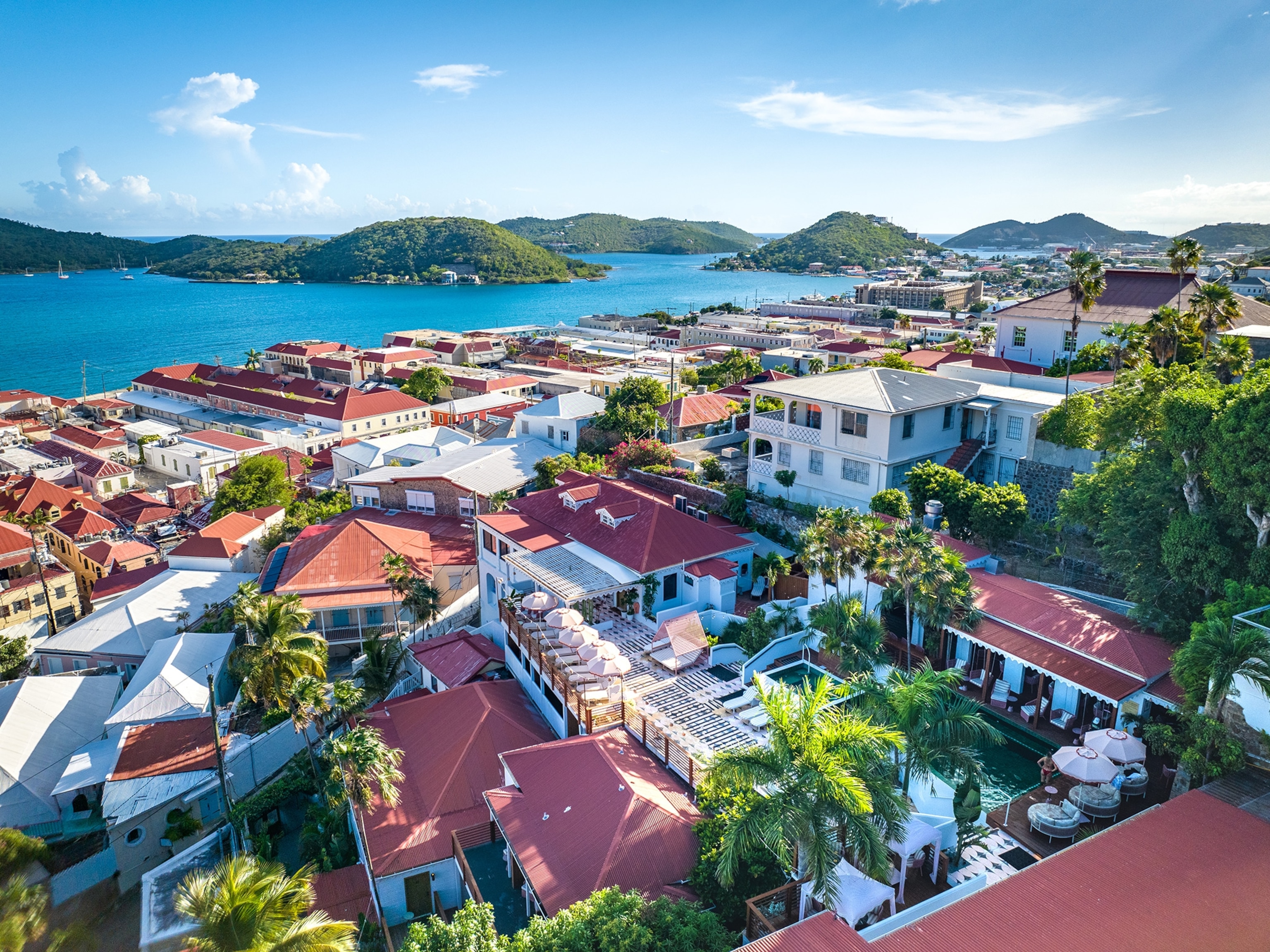These remarkable, centuries-old churches were built without nails
The elegant structures that make up Kizhi Pogost set a fairytale-like scene on Russia's Lake Onega.
On Kizhi Island, one of a thousand islands in Russia’s Lake Onega, onion-shaped church domes and an octagonal bell tower shimmer in the sunlight.
Set among meadows, marshy banks, and lapping waters, the fantastic structures that make up Kizhi Pogost create a fairytale-like scene. Inscribed to the UNESCO World Heritage list in 1990 alongside St. Petersburg’s Historic Centre and Moscow’s Kremlin and Red Square, the site is considered a testament to the architectural and cultural traditions of Russia’s remote Karelia region.
While this area was originally populated by Finno-Ugric peoples, as Russians migrated to the region over centuries, Kizhi Island transitioned from a site for pagan rituals to an Orthodox hub for a sprawling parish community.
In lieu of the flamboyant colors and patterns that distinguish Russia’s most famous cathedrals, Kizhi’s churches are elegantly understated. While seemingly simplistic, their construction is a feat of advanced carpentry. Most notable are the hand-carved, aspen shingles that cover 22 multitiered cupolas of the Transfiguration Church (Summer Church) and nine domes of the Church of the Intercession (Winter Church). [Reserve your spot on a National Geographic Russia Private Expedition.]
According to legend, a carpenter named Nestor built the Transfiguration Church with only his axe. Upon its completion in 1714, he threw the axe into the lake, declaring that there would never be another church like it.
During Peter the Great’s reign in the 18th century, the churches standing today were erected on the site of older ones that were destroyed by lightning. The bell tower was added later in the 19th century. While the structures were originally constructed exclusively from wood, their modern preservation requires the use of additional materials such as nails and metal rods.
Beyond Kizhi Pogost, several wooden buildings including houses, barns, windmills, bathhouses, and chapels were relocated from various villages to Kizhi Island to form the open-air State Museum-Reserve, and more fully showcase traditional village life. The island also pays homage to its heritage through folk crafts like woodworking and performances like bell-ringing throughout the island.
How to get there
Kizhi Island is about two hours by hydrofoil boat from Petrozavodsk, the capital of the Republic of Karelia. Hydrofoils run at least twice per day (May to October.) During the winter season (January to March) when Lake Onega ices over, adventurers can journey to the island by hovercraft, snowmobile, dog sled, or skis. The best way to get to Petrozavdosk is via a six-hour train ride from St. Petersburg’s Ladozhsky station. Several tour companies offer preplanned tours, and some Russian river cruises also make a stop on Kizhi Island.
When to visit
Kizhi Island is open year-round, and each season offers its own charms. Winters can be harsh, so mid-May through August are the most popular months to visit. While there may be some scaffolding due to ongoing restoration, the intricate process itself is a feat to be admired.
How to visit
Once on Kizhi Island, visitors who booked through tour companies are greeted by their pre-arranged guides. If exploring independently, there is an entrance fee and options for audio guides, bike rentals, or guided tours. Four hours is the typical duration of the trip, and the first two hours are best spent touring Kizhi Pogost and its surroundings. Beyond this area, there are paths to additional historic structures and settlements throughout the narrow, four-mile island. There are also themed tours, including a behind-the-scenes look at the impressive restoration efforts.
Related Topics
You May Also Like
Go Further
Animals
- How can we protect grizzlies from their biggest threat—trains?How can we protect grizzlies from their biggest threat—trains?
- This ‘saber-toothed’ salmon wasn’t quite what we thoughtThis ‘saber-toothed’ salmon wasn’t quite what we thought
- Why this rhino-zebra friendship makes perfect senseWhy this rhino-zebra friendship makes perfect sense
- When did bioluminescence evolve? It’s older than we thought.When did bioluminescence evolve? It’s older than we thought.
- Soy, skim … spider. Are any of these technically milk?Soy, skim … spider. Are any of these technically milk?
Environment
- Are the Great Lakes the key to solving America’s emissions conundrum?Are the Great Lakes the key to solving America’s emissions conundrum?
- The world’s historic sites face climate change. Can Petra lead the way?The world’s historic sites face climate change. Can Petra lead the way?
- This pristine piece of the Amazon shows nature’s resilienceThis pristine piece of the Amazon shows nature’s resilience
- Listen to 30 years of climate change transformed into haunting musicListen to 30 years of climate change transformed into haunting music
History & Culture
- Meet the original members of the tortured poets departmentMeet the original members of the tortured poets department
- Séances at the White House? Why these first ladies turned to the occultSéances at the White House? Why these first ladies turned to the occult
- Gambling is everywhere now. When is that a problem?Gambling is everywhere now. When is that a problem?
- Beauty is pain—at least it was in 17th-century SpainBeauty is pain—at least it was in 17th-century Spain
Science
- Here's how astronomers found one of the rarest phenomenons in spaceHere's how astronomers found one of the rarest phenomenons in space
- Not an extrovert or introvert? There’s a word for that.Not an extrovert or introvert? There’s a word for that.
- NASA has a plan to clean up space junk—but is going green enough?NASA has a plan to clean up space junk—but is going green enough?
- Soy, skim … spider. Are any of these technically milk?Soy, skim … spider. Are any of these technically milk?
Travel
- Could Mexico's Chepe Express be the ultimate slow rail adventure?Could Mexico's Chepe Express be the ultimate slow rail adventure?
- What it's like to hike the Camino del Mayab in MexicoWhat it's like to hike the Camino del Mayab in Mexico





























